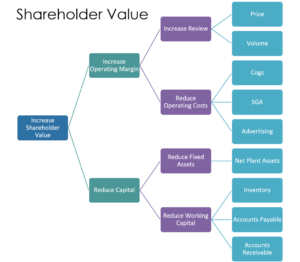by Ashu Bhatia –
Of course, the digital lifestyle has been around for some time. Why the focus on Digital Transformation for value creation of late? This is because the shift in consumer behavior for how products and services are purchased and how these technologies can be used internally by companies is evolving. And the results are all around us:
- World’s largest accommodation provider has no real estate – AirBnB
- Largest Taxi company owns no taxis – Uber
- Largest movie house has no cinemas – Netflix
- World’s largest retailer has no Inventory – Alibaba
- Largest software vendors don’t write their own apps – Apple
So clearly Digital Darwinism is a good thing. Both the customer and employee behaviors are changing, and we need to create and leverage this capability in our businesses. So then the question becomes – how do other companies look at their value chain and grab the right digital opportunities at every step? To do justice to this question, we need to understand the value engineering for the company and industry we work in. With that understanding comes opportunities for transformation which can spawn new revenue models. The quote one is reminded of for such disruption is that of Henry Ford,
“If I had asked people what they wanted, they would have said ‘faster horses.’”
The term “Value” is used so much in business and never completely understood. What is value anyway? Value at the highest level answers three sets of questions:
- How much cash will the company generate? How much cash injection will it need?
- How certain are the cash generation and realization of the investment?
- When will cash be generated? When will the value be harvested?
Shareholder Value is the part of its capitalization that is equity as opposed to long-term debt. According to the Value Based Management approach, the focus of planning and control systems is on creating value for shareholders through actions aimed at optimizing the risk-return profile for shareholders.
Shareholder Value Tree
As illustrate in the value tree above, Digital Transformation is effective for all levels and includes increasing revenue on top and reducing cost on the bottom side. As you lay out a broad digital roadmap for your organization, you have to inventory company “assets” and activities. The key trends in the technology space that can help apply the right business model and design thinking (not just the product or service design) for your future business model are as below:
Connected Everything: Connected devices of all kinds and cheap sensors integrated nearly everywhere, constantly create large amounts of data that need to be managed effectively. This enables new ways of automated and personal interaction for the business backend operations like supply chain management, etc. Companies can reduce their operating costs by 10 – 15% through digitalized operations. For example, usage-based insurance is the best example of this, especially for automobile insurance. Through connected vehicles or third party devices that could plug into the vehicle, the insurance company can monitor driving habits to score the driver and accordingly price the insurance policy quickly and more personalized for their customers.
Predictive Analytics / Big Data: Analytical methods and access to the right data enable the next generation of new insights and decision-rich information and this is changing drastically the front end business functions like marketing, personalization, targeting, customer servicing, etc. For example, retail banks offer additional services like mobile payment or omnichannel banking for their customers as needed
Mobile: The uninterrupted trend towards using mobile devices impacts all areas of business and personal life by transforming how people interact and consume. Millennials buy and research through this platform all across the world. This has created new revenue streams for companies. For example, Telcos partner with retailers (for a fee) to push offers to shoppers who opt-in. Content lives globally across all platforms
Cloud: The possibility to virtualize and consume infrastructure, platforms and applications as a service enables new levels of scalability, flexibility and responsiveness. – driving costs in a more on-demand op-ex manner. Examples are all around us – for instance, a marketing cloud is an end-to-end digital marketing platform to manage contacts and target leads. HubSpot combines easy-to-use marketing automation and hyper-targeting of leads and ensures emails actually arrive in the inbox for the same.
Social media: Consumer collaboration technologies enable new ways and drive expectations of interacting, personalization and building relationships within and beyond the organization. The consumer has become the brand ambassador. For example, banks are sitting on a treasure trove of data, reaching deep into their customers’ financial lives – from purchase preferences to individual specifics on financial goals on major life events like home buying, retirement, children, and education.
Examples of new business models evolved due to digital transformation:
| Model | Description | Example |
| Ad-Supported | Third-party funding enables free/discounted consumer access to digital services – includes display, in-stream, click through ads, etc. | Google Adworks |
| Brokerage | Marketplace creation to connect buyers and sellers and facilitate transactions – fee / revenue share captured from each transaction | eBAY, PayPal |
| Merchandising | Sale of related goods / services driven by the digital relationship – (e.g., sale of concert tickets as a result of music download) | Shutterfly |
| Subscription | Recurring revenue stream for continued usage of content or services | Netflix |
| Infomediary | Sale of customer information to third parties | Nielson |
#IdeasRealized


